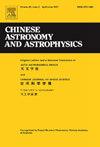Analysis of Factors Influencing the Shielding Effectiveness of Multi-layer Cavity Based on BLT Equation
Q4 Physics and Astronomy
引用次数: 0
Abstract
This paper centers on the technical problem of aperture coupling of multi-layer shielding cavity, and carries out the research on the influence of aperture coupling on the shielding effectiveness to provide technical support for the electromagnetic compatibility design of large radio telescopes. Based on Robinson model and electromagnetic topology theory, this paper establishes the equivalent circuit of a double-layer perforated shielding cavity and its signal flow diagram, and solves the shielding effectiveness using the BLT (Baum-Liu-Tesch) equation, taking into account the case of a 3-layer cavity. The accuracy of the measurement results, simulation values, Robinson's algorithm and this paper's algorithm are compared and analyzed, and the accuracy of this paper's algorithm is verified. On this basis, this method is used to analyze the influence of the layer spacing, the shape of the hole, and the installation position of the radiation source on the shielding effectiveness of the double-layer metal cavity in the 0–1.5 GHz band, and the engineering suggestions are given. In addition, the relationship between the number of layers of the three-layer shielding cavity and the shielding effectiveness is analyzed. The results show that there is a linear relationship between the shielding effectiveness and the number of layers.
基于BLT方程的多层空腔屏蔽效能影响因素分析
本文围绕多层屏蔽腔孔径耦合的技术问题,开展了孔径耦合对屏蔽效能的影响研究,为大型射电望远镜的电磁兼容设计提供技术支持。基于Robinson模型和电磁拓扑理论,建立了双层穿孔屏蔽腔的等效电路及其信号流程图,并在考虑三层腔的情况下,采用BLT (Baum-Liu-Tesch)方程求解屏蔽效能。对测量结果、仿真值、Robinson算法和本文算法的精度进行了比较分析,验证了本文算法的精度。在此基础上,利用该方法分析了层间距、孔形状、辐射源安装位置等因素对双层金属腔在0-1.5 GHz频段屏蔽效能的影响,并给出了工程建议。此外,还分析了三层屏蔽腔层数与屏蔽效果的关系。结果表明,屏蔽效果与层数呈线性关系。
本文章由计算机程序翻译,如有差异,请以英文原文为准。
求助全文
约1分钟内获得全文
求助全文
来源期刊

Chinese Astronomy and Astrophysics
Physics and Astronomy-Astronomy and Astrophysics
CiteScore
0.70
自引率
0.00%
发文量
20
期刊介绍:
The vigorous growth of astronomical and astrophysical science in China led to an increase in papers on astrophysics which Acta Astronomica Sinica could no longer absorb. Translations of papers from two new journals the Chinese Journal of Space Science and Acta Astrophysica Sinica are added to the translation of Acta Astronomica Sinica to form the new journal Chinese Astronomy and Astrophysics. Chinese Astronomy and Astrophysics brings English translations of notable articles to astronomers and astrophysicists outside China.
 求助内容:
求助内容: 应助结果提醒方式:
应助结果提醒方式:


